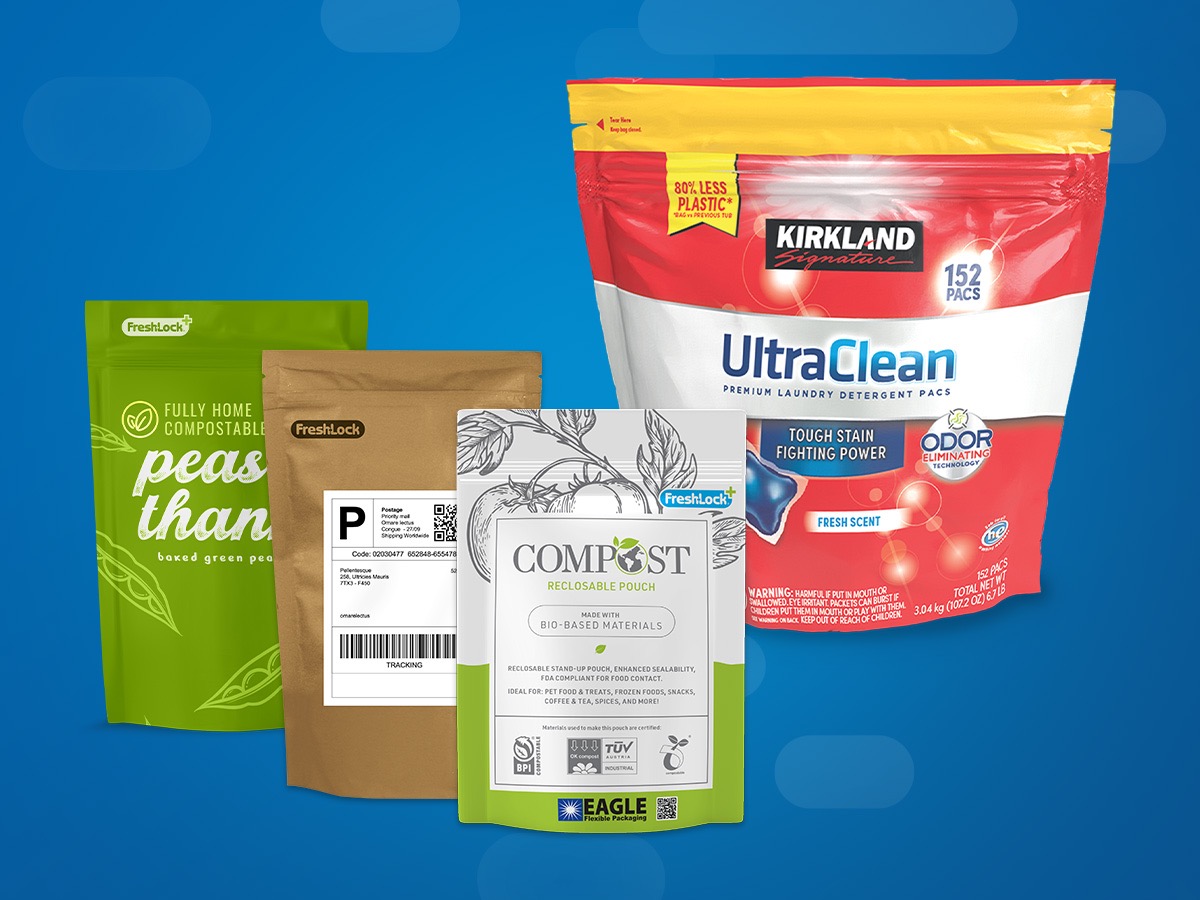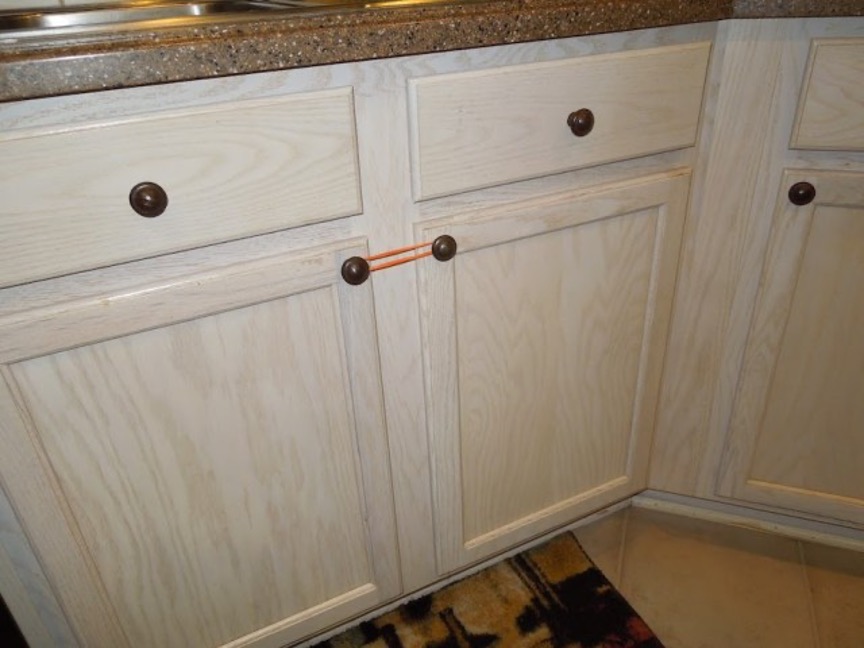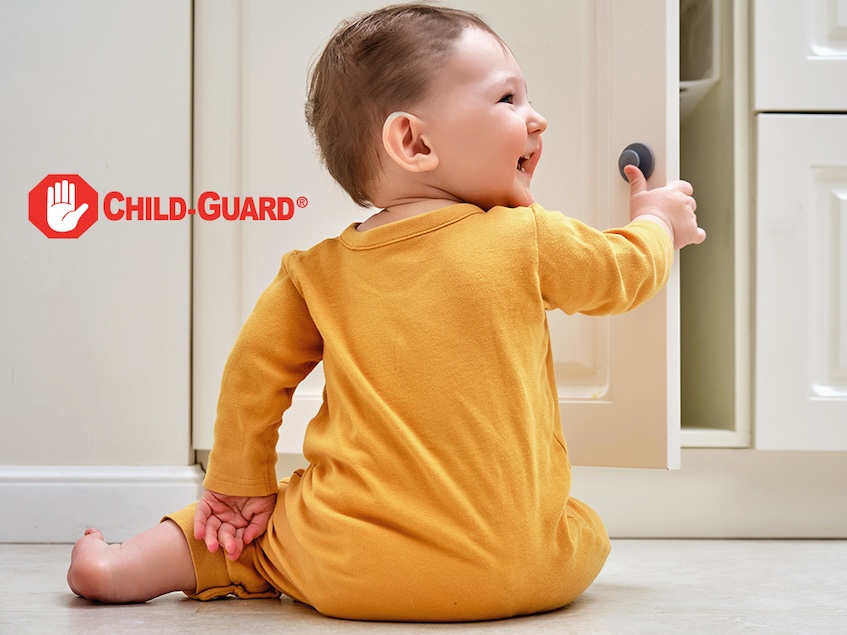
7 DIY Babyproofing Tips for Parents
A new child will transform your home—especially if you’re a first-time parent. Being a new parent means a lot of new responsibilities, which also often come with a fair share of worrying. Babies are always changing; as soon as they get through one phase, they’re onto the next. Once your little one starts crawling, all bets are off! That’s when you know it’s time to think about babyproofing the house to make it a safer place.
There are plenty of childproofing products and supplies you can purchase, but there are also some simple tips and tricks that do the job quite well while saving you time, money, and extra stress.
1. Babyproof Cabinets with Rubber Bands
Some parents may find that child safety locks can be annoying when it comes to getting in and out of kitchen cabinets throughout the day. Additionally, constant use can lead to the spring release latches breaking—which doesn’t bode well for keeping little ones safe. For parents struggling with child safety locks, consider using rubber bands instead, as they do the trick and are easily replaceable.
This simple babyproofing hack is recommended by many parenting websites. Instead of choosing from the many types of plastic safety locks, you can stretch tight rubber bands, hair ties, or rubber bracelets over the cabinet handles/knobs to keep curious kids out. For extra tightness, make a double loop or a figure eight using the rubber band.
Pro babyproofing tip: Move all potentially harmful products into one location. Then you won’t have to worry about locking numerous cupboards and cabinets.

2. Use Tape on Electrical Outlets
Like safety locks for cabinets, another plastic childproofing product that can be bothersome is the electric outlet cover. Though these covers can work well, taking them out of outlets can be quite difficult and even cause broken fingernails.
To make an easy DIY outlet cover, use masking tape, duct tape, or painter’s tape. In fact, some parents even use adhesive bandages. Though parents may want to avoid using bandages or tape with bright colors or cartoon characters since those designs could attract small children.
This babyproofing hack is especially great for parents and caretakers on the go. Keep a roll of painter’s tape in the diaper bag for quickly babyproofing outlets when you’re visiting family or staying in a hotel. Painter’s tape is designed to leave little or no sticky residue, so parents won’t have to worry about tricky clean up when they’re packing up to leave.
3. Prevent Crib Climbers
Whether it’s in the middle of the night or during a temper tantrum at naptime, toddlers who constantly climb out of their cribs can be a problem, especially when you don’t know what mischief they’re getting into.
Here are three ways to keep kids from climbing out of their cribs:
- If you have a crib that’s higher on one side, rotate the crib and put the shorter side facing the wall.
- Use a sleep sack so your child’s feet are tucked in and there’s limited space to get their leg over the crib. Pro babyproofing tip: Put the sleep sack on backwards so your smart kiddos can’t unzip it.
- Move dressers and side tables away from the crib so your child doesn’t have any leverage to climb off.
4. Test Toys with a Toilet Paper Roll
Choking hazards are a big concern for parents with toddlers, especially if there are small toys from older siblings lying around. While there are safety products designed to test if a toy is small enough to be a choking hazard, there’s something in every home that works just as well: the toilet paper roll.
The cardboard tube has comparable size to determine if a toy is too small for children up to age three. “Anything that passes through the tube means it can go into their mouth and they can swallow it,” said Dr. Nkeiruka Orajiaka, a pediatrician in Ohio. She encourages parents to also be aware of toys that come with batteries or have small pieces that can break off.
5. Babyproof Rooms with the DIY Door Muff
When a child accidentally gets locked inside a room, parents don’t want to waste time trying to take a doorknob off to make sure their child is safe. If a toddler gets locked inside a bathroom or laundry room where they could ingest harmful substances, it can be especially scary—even if that room already has babyproofing measures in place.
To prevent doors from closing and locking behind your little one, there’s a simple DIY project for making a door muff—a contraption that hooks around both knobs and covers the latch assembly and face plate. Not only will this prevent kids from getting locked in a room, but it also keeps them from loudly slamming doors.

6. Use Pool Noodles and Tennis Balls for Babyproofing Furniture
Small children will quickly go from crawling, to walking, to running full speed around the house. Many parents have worries about children knocking their heads on corners or the edges of tables and countertops. An easy DIY hack involves using items like foam pool noodles, tennis balls, and a pair of good scissors.
Simply cut open one side of a noodle and wrap it around the sharp edges of tables, doors, and fireplaces to prevent scrapes and dumps. Similarly, tennis balls can be sliced open and placed on the corners of coffee tables, kitchen islands, and dining tables. While this may not be the most aesthetically pleasing solution, it’s important to remember the babyproofing stage will go by quickly.

7. Buy Products with Child-Resistant Packaging Already Built-In
Products that already come equipped with an innovative child-resistant closure can help make babyproofing easier for families with small children. For years, safety caps were the main solution for child-resistant packaging. In 2015, the Fresh-Lock team developed Child-Guard® Track & Slider for use on flexible pouches. Since then, new innovations of the Child-Guard® Slider and child-resistant zippers have followed to make child-resistance more accessible to brands.
Designed to help keep kids out of a flexible package, parents can find the Child-Guard® technology being used by responsible brands offering products like laundry pacs, over-the-counter medications, and more.
While shopping for your tried-and-true products, keep an eye out for comparable products that utilize child-resistant technology to see it for yourself and help keep your family safe.

 Back to Blog
Back to Blog


